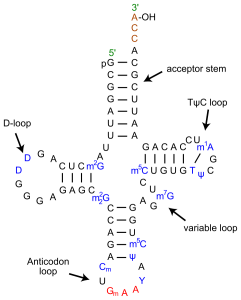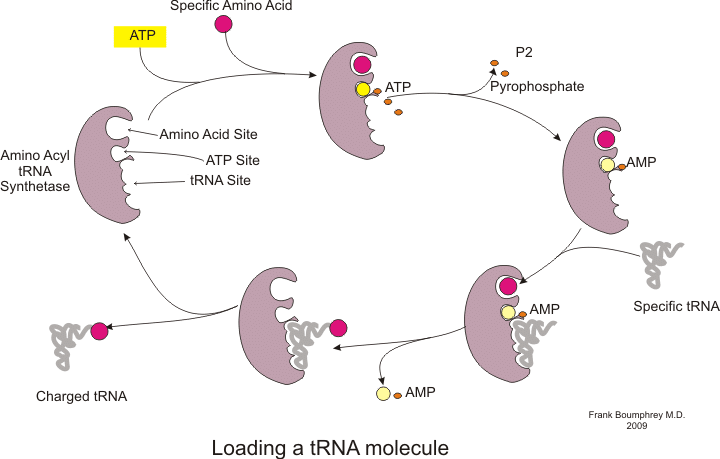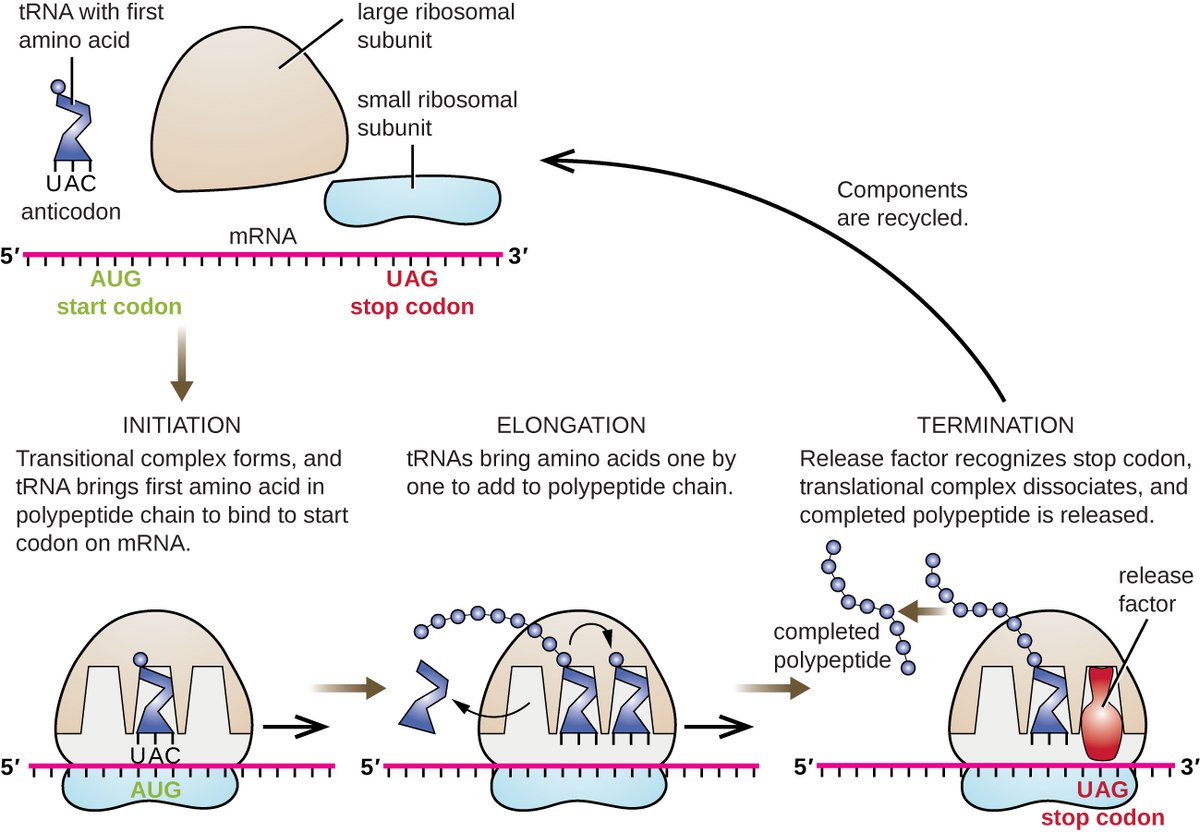Translation is the process by which the genetic code contained within a messenger RNA (mRNA) molecule is decoded to produce a specific sequence of amino acids in a polypeptide chain.
It occurs in the cytoplasm following DNA transcription and, like transcription, has three stages: initiation, elongation, and termination. In this article, we will discuss the components and stages of DNA translation.
Components of Translation
The key components required for translation are mRNA, ribosomes, and transfer RNA (tRNA).
During translation, mRNA nucleotide bases are read as codons of three bases. Each codon codes for a particular amino acid.
Every tRNA molecule possesses an anticodon that is complementary to the mRNA codon, and at the opposite end lies the attached amino acid. tRNA molecules are therefore responsible for bringing amino acids to the ribosome in the correct order, ready for polypeptide assembly.

Fig 1 – Structure of a tRNA molecule featuring the anticodon, complementary to specific mRN
A single amino acid may be coded for by more than one codon. There are also specific codons that signal the start and the end of translation.
Aminoacyl-tRNA synthetases are enzymes that link amino acids to their corresponding tRNA molecules. The resulting complex is charged and is referred to as an aminoacyl-tRNA.
Initiation
For translation to begin, the start codon (5’AUG) must be recognised. This codon is specific to the amino acid methionine, which is nearly always the first amino acid in a polypeptide chain.
At the 5’ cap of mRNA, the small 40s subunit of the ribosome binds. Subsequently, the larger 60s subunit binds to complete the initiation complex. The next step (elongation) can now commence.
Elongation
The ribosome has two tRNA binding sites; the P site which holds the peptide chain and the A site which accepts the tRNA.
While Methionine-tRNA occupies the P site, the aminoacyl-tRNA that is complementary to the next codon binds to the A site, using energy yielded from the hydrolysis of GTP.
Methionine moves from the P site to the A site to bond to a new amino acid there, starting the growth of the peptide. The tRNA molecule in the P site no longer has an attached amino acid, so leaves the ribosome.
The ribosome then translocates along the mRNA molecule to the next codon, again using energy yielded from the hydrolysis of GTP. Now, the growing peptide lies at the P site and the A site is open for the binding of the next aminoacyl-tRNA, and the cycle continues.
The polypeptide chain is built up in the direction from the N terminal (methionine) to the C terminal (the final amino acid).
Termination
One of the three stop codons enters the A site. No tRNA molecules bind to these codons, so the peptide and tRNA in the P site become hydrolysed, therefore releasing the polypeptide into the cytoplasm. The small and large subunits of the ribosome then dissociate, ready for the next round of translation.


